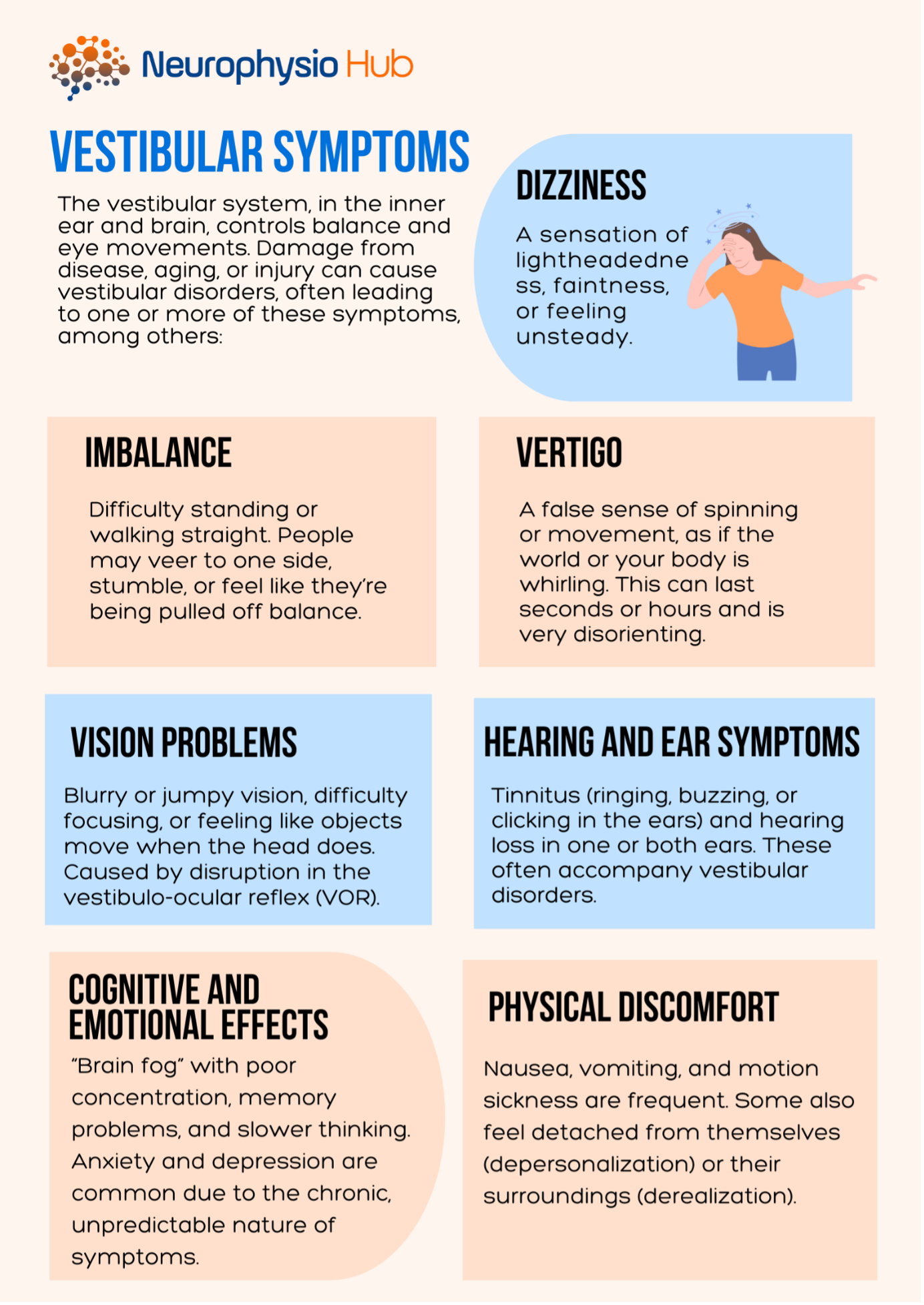Vestibular Rehabilitation: Finding Your Balance Again
What is vestibular rehabilitation?
Do you often feel dizzy, unsteady, or like the world is spinning? If so, you’re not alone, and help is available. Vestibular Rehabilitation is a special type of physiotherapy that reduces dizziness, improves balance, and helps you feel more confident moving through your day.
Vestibular rehabilitation works by retraining your brain and body to better use signals from your inner ear, eyes, and muscles, the three systems that keep us upright and steady.
Who can benefit from vestibular rehabilitation?
Vestibular rehab may help if you have:
Vertigo (that spinning sensation)
Ménière’s disease
Benign paroxysmal positional vertigo (BPPV)
Labyrinthitis or vestibular neuritis
Migraine-related dizziness
Balance problems after a stroke or brain injury
Increased risk of falls
If dizziness or imbalance is interfering with your daily life, vestibular rehabilitation could make a real difference.
How does it work?
Think of your balance system as a team made up of:
Your inner ear (vestibular system)
Your eyes (vision)
Your muscles and joints (proprioception)
When one of these systems isn’t working well, the others have to pick up the slack. Vestibular rehabilitation uses targeted exercises to help your brain adapt and coordinate these signals more effectively.
What to expect
At your first session, your physiotherapist will complete an assessment, checking:
How well your inner ear is working
Your balance and walking pattern
Muscle strength and flexibility
From there, they’ll design a personalised exercise program. This may include:
Eye and head movement exercises to reduce dizziness
Balance training to make standing and walking steadier
Stretching and strengthening to support posture and movement
Most people also receive a home program. Daily practice at home is just as important as your clinic visits.
How long does therapy last?
Everyone’s recovery is different, but many people attend 4 to 8 weekly sessions.
Some only need one or two visits.
Others, especially if symptoms are long-standing, may need several months of therapy.
The key is consistency. Sticking with your exercises helps your brain and body adjust more quickly.
The benefits
With regular practice, VRT can help you:
Feel less dizzy
Improve your balance
Reduce your risk of falls
Steady your vision when moving
Get stronger and more confident in daily life
Are there any risks?
Vestibular rehabilitation is safe. It’s common to feel a little more dizzy or off-balance at first as your body adjusts. Some people may notice mild neck or back discomfort with the exercises. Serious side effects are rare.
Vestibular rehabilitation is not an instant fix, but with commitment and practice, it can retrain your balance system and significantly improve your quality of life.

